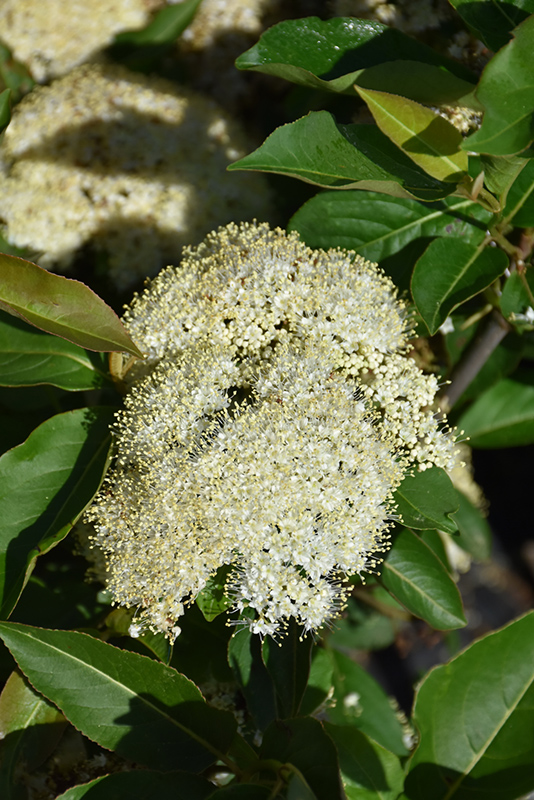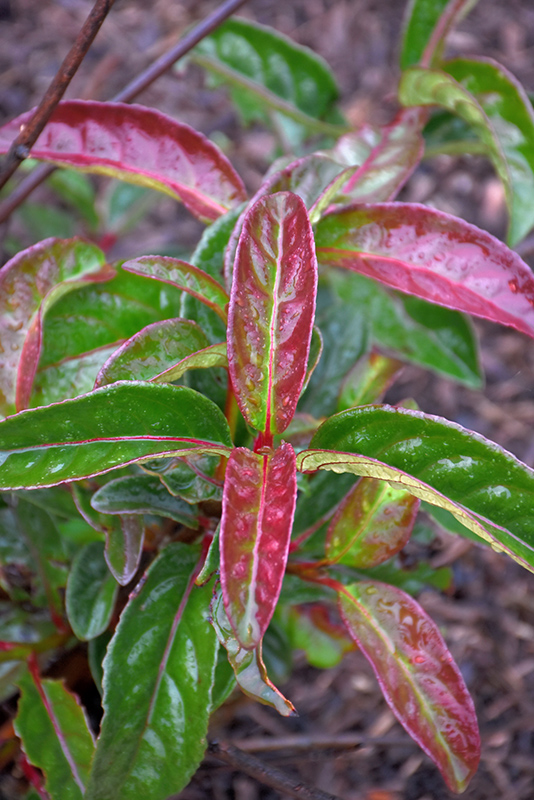Lil' Ditty® Witherod Viburnum
Viburnum cassinoides 'SMNVCDD'
Height: 24 inches
Spread: 24 inches
Sunlight:
![]()
![]()
Hardiness Zone: 2a
Brand: Proven Winners
Description:
An outstanding dwarf variety that produces large clusters of creamy white fragrant flowers in late spring; leave flower clusters intact if fruit is desired, otherwise prune after flowering; good fall color; great for shrub border fronts or containers
Ornamental Features
Lil' Ditty® Witherod Viburnum features showy creamy white flat-top flowers at the ends of the branches in late spring. The red fruits with silvery blue overtones and which fade to black over time are held in abundance in spectacular clusters from early fall to mid winter. It has dark green deciduous foliage which emerges coppery-bronze in spring. The pointy leaves turn outstanding shades of brick red, orange and purple in the fall.
Landscape Attributes
Lil' Ditty® Witherod Viburnum is a dense multi-stemmed deciduous shrub with a more or less rounded form. Its average texture blends into the landscape, but can be balanced by one or two finer or coarser trees or shrubs for an effective composition.
This is a relatively low maintenance shrub, and should only be pruned after flowering to avoid removing any of the current season's flowers. It is a good choice for attracting birds to your yard, but is not particularly attractive to deer who tend to leave it alone in favor of tastier treats. It has no significant negative characteristics.
Lil' Ditty® Witherod Viburnum is recommended for the following landscape applications;
- Mass Planting
- Hedges/Screening
- Border Edging
- General Garden Use
- Groundcover
Planting & Growing
Lil' Ditty® Witherod Viburnum will grow to be about 24 inches tall at maturity, with a spread of 24 inches. It tends to be a little leggy, with a typical clearance of 1 foot from the ground. It grows at a medium rate, and under ideal conditions can be expected to live for 40 years or more. This variety requires a different selection of the same species growing nearby in order to set fruit.
This shrub does best in full sun to partial shade. It prefers to grow in average to moist conditions, and shouldn't be allowed to dry out. It is not particular as to soil type or pH. It is somewhat tolerant of urban pollution. This is a selection of a native North American species.


